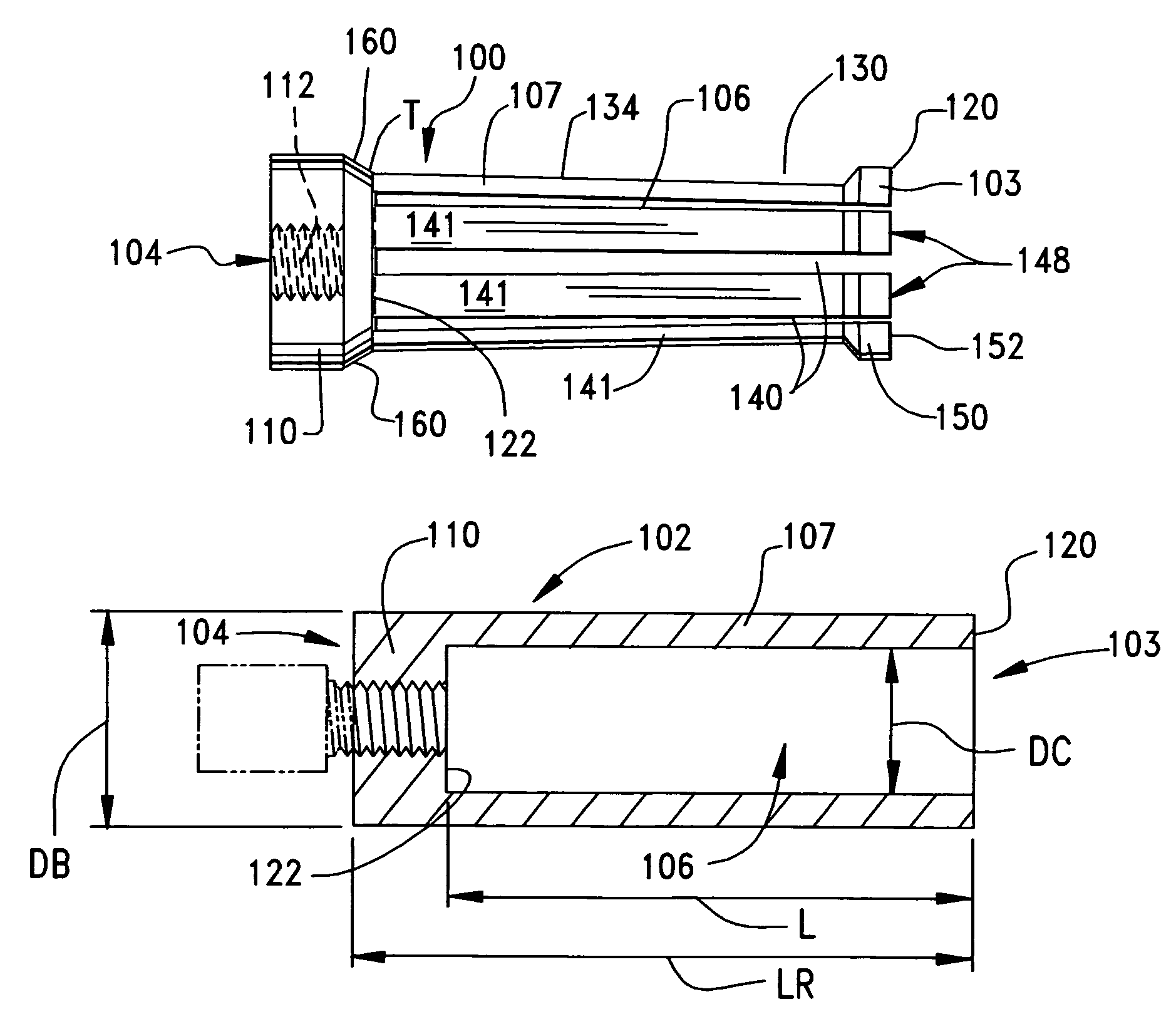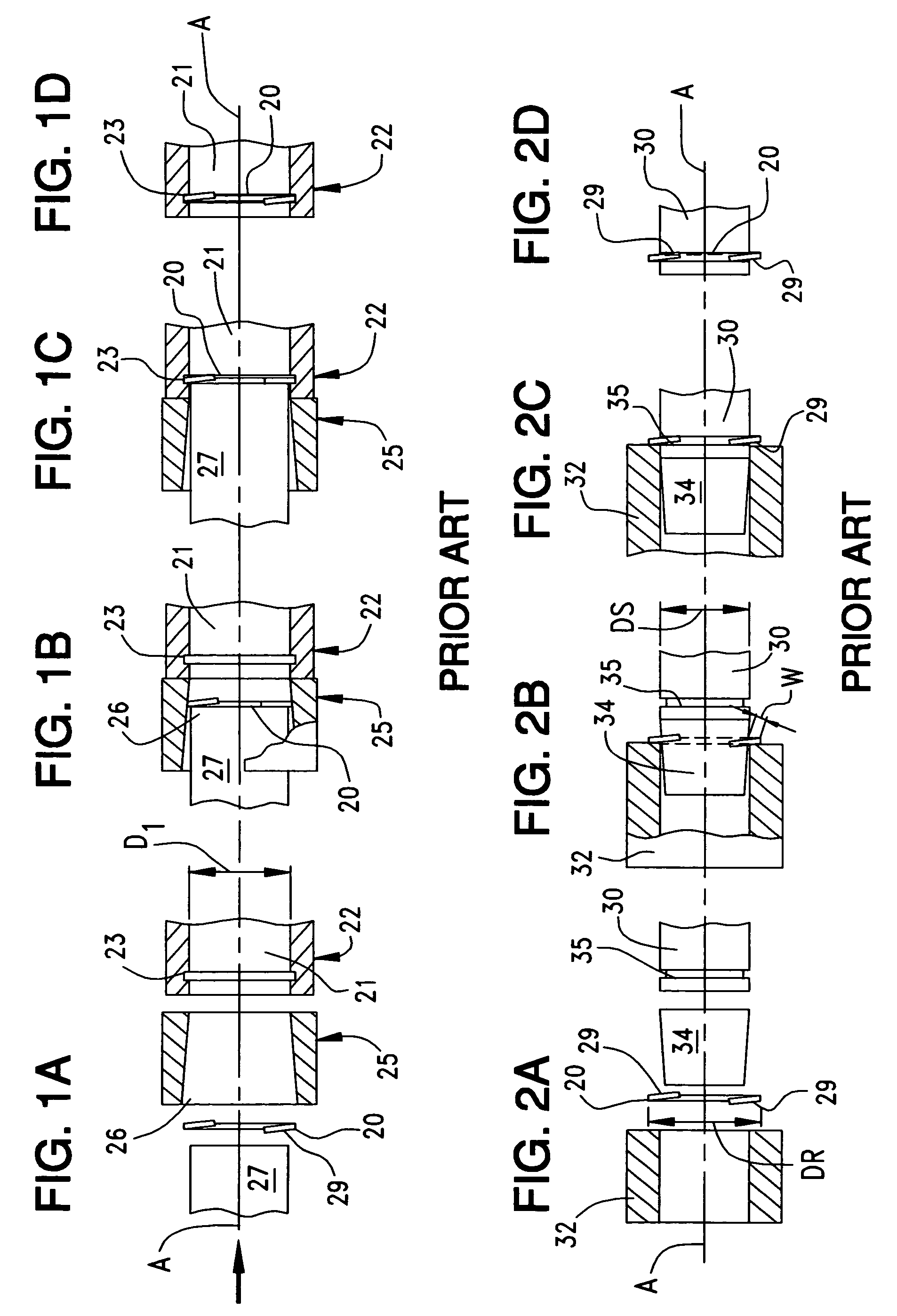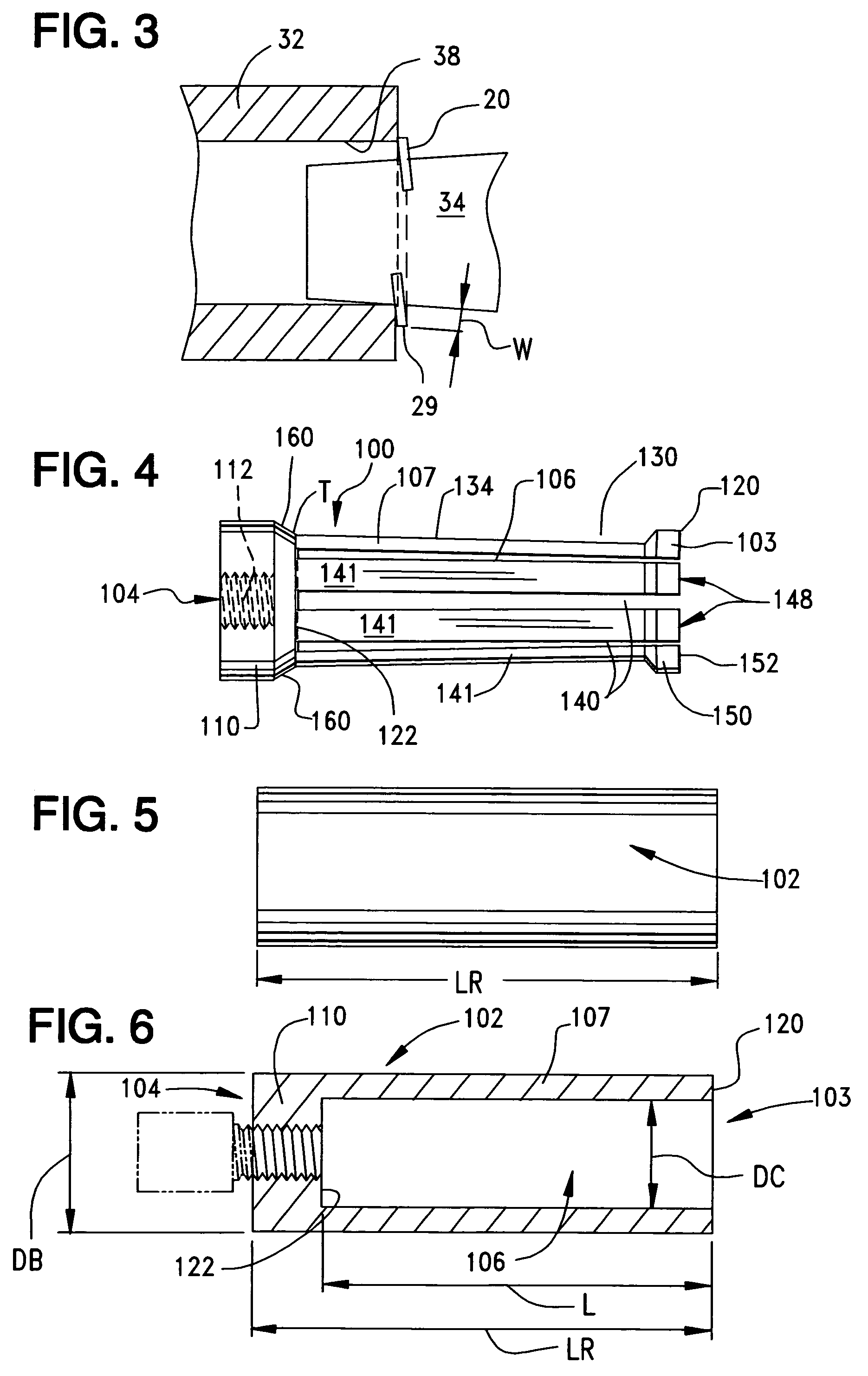Retaining ring installation tool
a technology for installing tools and retaining rings, which is applied in the direction of metal-working equipment, metal-working equipment, manufacturing tools, etc., can solve the problems of not being able to use for the installation of rings that require a large amount of insertion, complicated and expensive, and unduly complicating the use of tools, etc., to achieve the effect of convenient use and flexibility
- Summary
- Abstract
- Description
- Claims
- Application Information
AI Technical Summary
Benefits of technology
Problems solved by technology
Method used
Image
Examples
Embodiment Construction
[0036]As mentioned above, retaining rings are used to retain work elements on shafts or in bores. Retaining rings may be formed from square edge, flat wire stock that is edge wound around a form or mandrel, to obtain a specific diameter or they may be stamped from sheet or strip metal in the form of a circlip. Spiral retaining rings are usually formed into a single turn or into multiple turns of flat wire. For a single turn retaining ring, a gap exists between the free ends of the flat wire, and the total circumferential extent of the flat wire extent from which the ring is made does not exceed about 360 degrees. In a two-turn ring, the flat wire stock is wound around a mandrel twice so that it has a circumferential extent that equals or is slightly less than two winds of 360 degrees each.
[0037]Multiple-turn retaining rings may be assembled onto or into their supporting components in two manners. In manual assembly, one end of the flat wire is first separated and then inserted into ...
PUM
| Property | Measurement | Unit |
|---|---|---|
| ultimate tensile strength | aaaaa | aaaaa |
| diameters | aaaaa | aaaaa |
| diameters | aaaaa | aaaaa |
Abstract
Description
Claims
Application Information
 Login to View More
Login to View More - R&D
- Intellectual Property
- Life Sciences
- Materials
- Tech Scout
- Unparalleled Data Quality
- Higher Quality Content
- 60% Fewer Hallucinations
Browse by: Latest US Patents, China's latest patents, Technical Efficacy Thesaurus, Application Domain, Technology Topic, Popular Technical Reports.
© 2025 PatSnap. All rights reserved.Legal|Privacy policy|Modern Slavery Act Transparency Statement|Sitemap|About US| Contact US: help@patsnap.com



